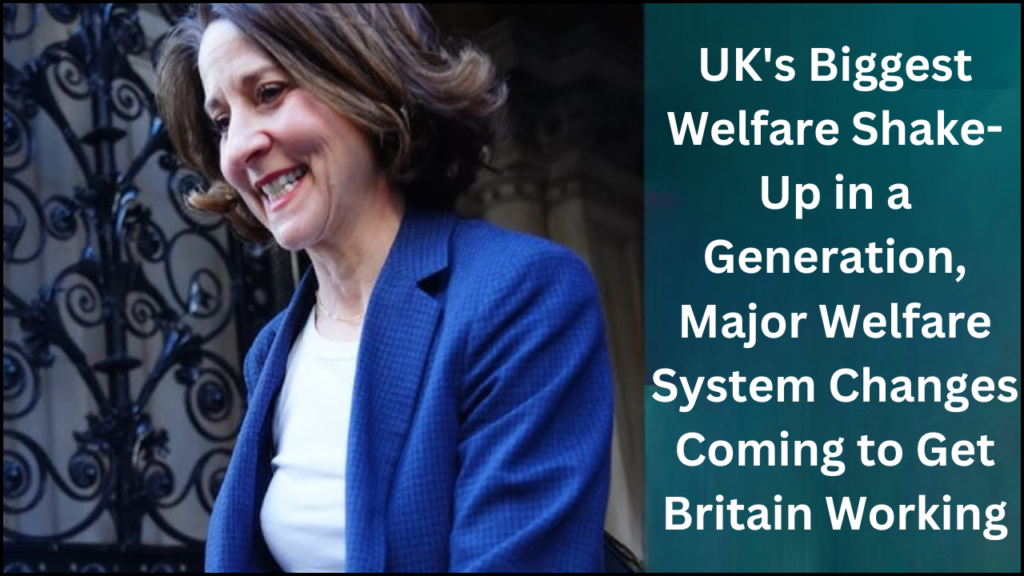
The UK government has announced what they’re calling the biggest changes to the welfare system in a generation. Work and Pensions Secretary Liz Kendall revealed a £1 billion plan aimed at helping disabled people and those with long-term health conditions find work, while also tackling rising benefit costs.
Read Also – UK £200 Cost of Living Payment In March 2025
Why These Changes Are Happening
The current system has significant problems. About 2.8 million people in Britain are not working due to long-term sickness – one of the highest rates among similar countries. Additionally, one in eight young people aren’t in work, education, or training.
The cost of Personal Independence Payments (PIP) has been growing rapidly. Since the pandemic, the number of working-age people receiving PIP has more than doubled. If nothing changes, the government expects the number of working-age PIP claimants to grow from 2 million in 2021 to 4.3 million by 2026, costing £34.1 billion each year.
Overall, health and disability benefits are predicted to cost £70 billion annually by 2030 – more than £1 billion every week. That’s equivalent to over a third of the NHS budget, or three times what’s spent on policing.
Read Also – PIP And Universal Credit Cuts could be announced this week
What’s Changing?
Prime Minister Keir Starmer says the current system “does not work for the people it is supposed to support, businesses who need workers or taxpayers who foot the bill.” The government wants to protect those who truly cannot work while helping those who can into employment.
Here are the main changes:
For Those Who Cannot Work
- End to reassessments: People with lifelong conditions who cannot work will no longer face regular benefit reassessments
- Protection for the most vulnerable: The government promises to ensure those who truly cannot work will always get the support they need
For Those Who Could Work
- Scrapping the Work Capability Assessment: This controversial assessment that labels people as either “can work” or “can’t work” will be replaced
- £1 billion employment support package: New tailored support to help disabled people and those with health conditions find suitable work
- “Right to Try” guarantee: People can try working without fear of immediately losing their benefits if it doesn’t work out
Making the System More Sustainable
- Changes to PIP eligibility: The daily living component of PIP will require a minimum score of four points on at least one daily living activity
- Rebalancing Universal Credit: The Standard Allowance will increase above inflation by 2029/30, adding £775 annually
- Youth changes: The government will consult on delaying access to the health element of Universal Credit until the age of 22
The Government’s Five Key Principles
The reforms are based on five main principles:
- Protecting those who cannot work: Ensuring dignity and appropriate support for those who will never be able to work
- Better employment support: Providing tailored help to get more people off benefits and into jobs
- Early intervention: Preventing people from becoming long-term unemployed through timely support
- Restoring trust: Fixing the assessment process to focus on what people can do rather than what they can’t
- Financial sustainability: Ensuring the system remains affordable for future generations
Expected Results
Work and Pensions Secretary Liz Kendall says these changes will bring “fairness for disabled people and those with long-term health conditions, but also for the taxpayers who fund it.”
The government expects these reforms to save over £5 billion by 2029-2030. Full details about the costs of individual measures will be published in the Spring Statement on March 26.
Timeline and Implementation
The government plans to introduce primary legislation this session to enable the PIP eligibility changes and Universal Credit rebalancing from 2026/27, subject to parliamentary approval. The Right to Work Guarantee will be delivered through separate legislation to be introduced later.
In Scotland and Wales, the UK government will work closely with the devolved administrations as some aspects of support for disabled people have been devolved while others remain under UK control.
Key Details
| Area | Current System | New System | Who It Affects |
|---|---|---|---|
| Work Capability Assessment | Labels people as “can work” or “can’t work” | Will be scrapped and replaced | Anyone claiming health and disability benefits |
| Reassessments | Currently paused for many claimants | Ended permanently for those with lifelong conditions; restarted for others | People with permanent disabilities (no more assessments); other claimants (will face reassessments) |
| PIP Eligibility | Based on points system | Will require minimum of 4 points on at least one daily living activity | People with lower needs may lose eligibility |
| Universal Credit | Current standard allowance with separate health element | Standard allowance will increase by £775 annually by 2029/30 | All Universal Credit claimants |
| Youth Support | UC health element available to those under 22 | May be delayed until age 22 (under consultation) | Young people with health conditions |
| Employment Support | Limited tailored support | £1 billion package of individualized help | People with disabilities who can work |
| Trying Work | Risk of losing benefits | New “Right to Try” guarantee | People are worried about losing benefits if they attempt to work |
What This Means For People
For those currently receiving benefits, the impact will vary:
- If you have a severe, lifelong condition and cannot work, you’ll no longer face reassessments
- If you receive UC health payments now, you’ll benefit from the increased standard allowance
- If you currently receive PIP but have lower needs, you may be affected by the eligibility changes
- If you’re under 22, you may see changes to how you access the health element of Universal Credit
The government says they will ensure that people who may lose PIP eligibility under the new rules will still have their health and care needs met, though the details of how this will work are still being developed.
Overall, these changes represent a significant shift in how the UK approaches welfare support, with a greater focus on helping people to work while protecting those with the greatest needs.





